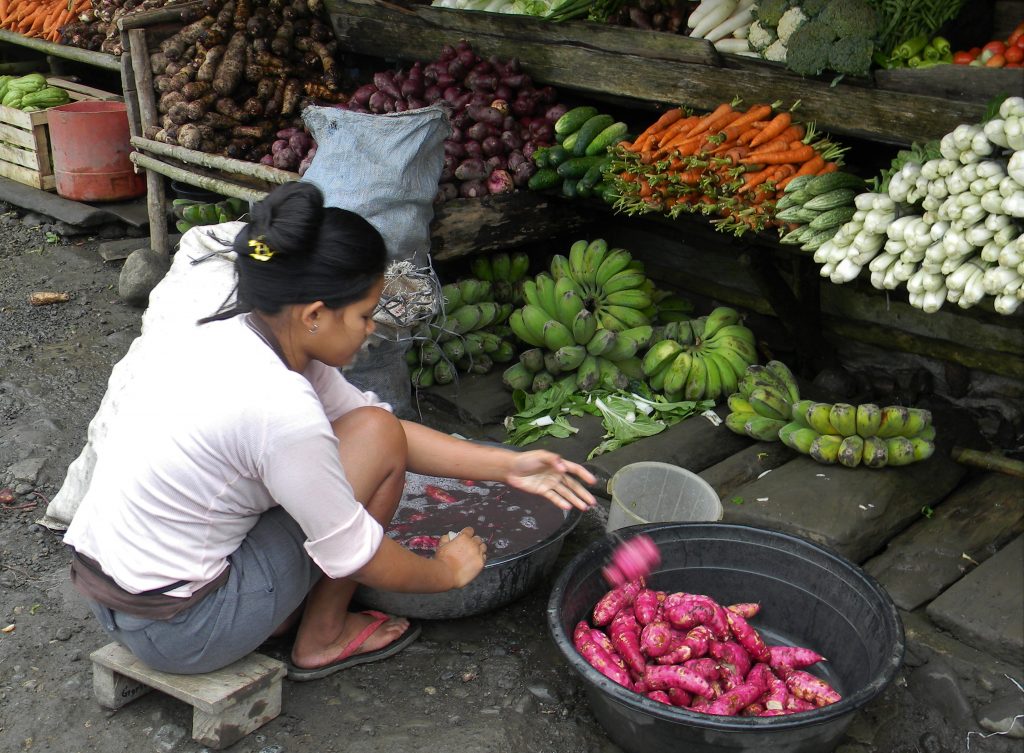By Henrylito D. Tacio
Last July 19, a 10-year-old boy died in Davao City due to severe dehydration (incessant vomiting and loss of bowel movement) three days after he was admitted at Southern Philippines Medical Center (SPMC). He was a victim of a diarrhea outbreak that happened in Toril District.
The boy reportedly had eaten “isaw” (grilled chicken intestines) and drank water from a food stall in Toril. He was among the seven patients who were brought to the SPMC for treatment. About 212 cases of diarrhea were recorded by the City Health Office.
The story above came to mind as the country observes Food Safety Awareness Week this month, based on Proclamation No. 160 signed by then President Joseph Estrada. Celebrated every fourth week of October since 1999, it aims to increase awareness on the importance of safe and clean food.
Food safety is defined as “the proper handling, cooking, and storage of food to prevent any foodborne illnesses or diseases that result from eating contaminated food.”

The US Food and Drug Administration (FDA) shares these four basic steps for food safety:
Clean: Always wash your food, hands, counters, and cooking tools. Clean the lids on canned goods before opening.
Separate: Keep raw foods – meat, poultry, seafood, and eggs – to themselves. Germs can spread from one food to another.
Cook: Foods need to get hot and stay hot. Heat kills germs.
Chill: Put food in the refrigerator or fridge right away. Never thaw food by simply taking it out of the fridge or refrigerator.
Foodborne illnesses are usually infectious or toxic in nature and caused by bacteria, viruses, parasites or chemical substances entering the body through contaminated food or water.
Foodborne pathogens can cause severe diarrhea or debilitating infections including meningitis. A rare infection, meningitis is an inflammation of the fluid and membrane surrounding the brain and spinal cord. The swelling from meningitis typically triggers signs and symptoms such as headache, fever and stiff neck.
Chemical contamination, according to the World Health Organization (WHO), can lead to acute poisoning or long-term diseases, such as cancer. Examples of unsafe food include uncooked foods of animal origin, fruits and vegetables contaminated with feces, and raw shellfish containing marine biotoxins.

Salmonella, Campylobacter, and Enterohemorrhagic Escherichia coli are among the most common foodborne pathogens that affect millions of people annually – sometimes with severe and fatal outcomes.
Examples of food involved in outbreaks of salmonellosis are eggs, poultry and other products of animal origin. Foodborne cases with Campylobacter are mainly caused by raw milk, raw or undercooked poultry and drinking water. Enterohemorrhagic Escherichia coli is associated with unpasteurized milk, undercooked meat and fresh fruits and vegetables.
Infection with Listeria, found in unpasteurized dairy products and various ready-to-eat foods, leads to miscarriage in pregnant women or death of newborn babies.
Vibrio cholerae infects people through contaminated water or food. Rice, vegetables, millet gruel and various types of seafood have been implicated in cholera outbreaks.
Some parasites, such as fish-borne trematodes, are only transmitted through food. Others, for example tapeworms like Echinococcus spp. or Taenia solium, may infect people through food or direct contact with animals.
“Unsafe food poses global health threats, endangering everyone,” the United Nations health agency admits. “Infants, young children, pregnant women, the elderly and those with an underlying illness are particularly vulnerable.”
According to the WHO, an estimated 600 million – almost one in 10 people in the world – fall ill after eating contaminated food and 420,000 die every year, resulting in the loss of 33 million healthy life years.
Each year, some US$110 billion is lost in productivity and medical expenses resulting from unsafe food in low- and middle-income countries.

Every year, 220 million children contract diarrheal diseases and 96,000 die. Unsafe food creates a vicious cycle of diarrhea and malnutrition, threatening the nutritional status of the most vulnerable.
Food can become contaminated at any point of production and distribution, and the primary responsibility lies with food producers. Yet, a large proportion of foodborne disease incidents are caused by foods improperly prepared or mishandled at home, in food service establishments or at markets.
“Not all food handlers and consumers understand the roles they must play, such as adopting basic hygienic practices when buying, selling and preparing food to protect their health and that of the wider community,” the WHO says.
Among the benefits of safe food for people, according to the WHO, include the following: better health and nutrition, increased school attendance and improved earning potential.
Production of safe food benefits the planet, including reducing food loss and waste. For the economy, the benefits of safe food are: higher productivity, flourishing food markets, stable food exports and trade, and lower medical expenses. – ###








